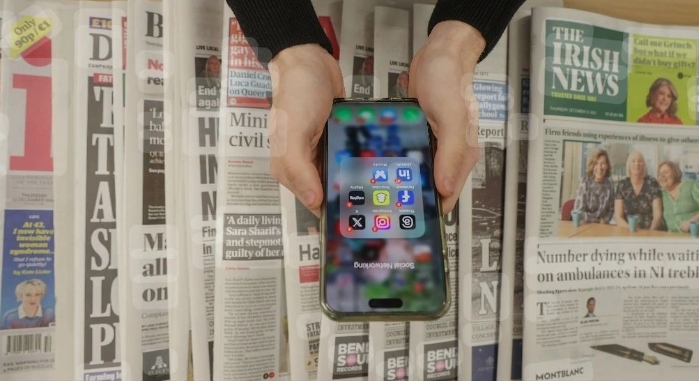
Director of Wellbeing at DCSF, Nicola Thompson, recently conducted a trial Life & Wellbeing Education lesson (aka PSHE), with her Year 11 students to assess how they access current affairs and stay informed on local or global events. The results were striking, with 19 out of 20 students stating they obtain their news primarily through social media platforms. Only four students reported watching the news, typically with their parents, and just one admitted to having read a newspaper in the past month – an instance motivated by assisting his grandfather with a horse racing tip. To their surprise, I had bought physical newspapers for the whole class, which seemed at odds with their preferred methods of news consumption.
Recent data from Ofcom's ongoing research on news consumption in the UK sheds light on these trends. According to their updated statistics, 64% of adults now access news through online channels, with social media platforms playing a significant role in how people consume current events. This shift toward digital news is further amplified among younger demographics, with 83% of 16-24-year-olds receiving news online, 71% of which comes from social media sources.
The latest findings also examine the influence of social media on traditional news outlets and how they curate and produce content. Publishers are increasingly aligning their reporting to reflect trends and topics circulating on social media, aiming to capture the attention of a digitally engaged audience. This adaptation has reshaped the landscape of news delivery, encouraging a more social-media-driven approach to journalism.
A key concern highlighted in the research is the lack of awareness among consumers regarding how they are targeted by online platforms. Many are unaware of how their social media activity influences the news they encounter, which in turn narrows the range of perspectives they are exposed to. This limited exposure to diverse viewpoints can significantly impact their understanding of current events and goes hand-in-hand with the danger of fake news.
Needless to say, despite the alien nature of newspapers to the group, the students enjoyed discovering the range of articles from the race to obtain the Artic Circle, disappearing planes in Alaska to Naomi Campbell’s charity scandal – quite a lesson exploring those topics alone.
It did, however, leave a question… Do we have a responsibility as educators to expose students to credible sources of news in schools regularly, to ensure that they are gaining 'real' and varied topics to broaden their perspective of the world? What do you think about how adolescents are consuming news stories?
